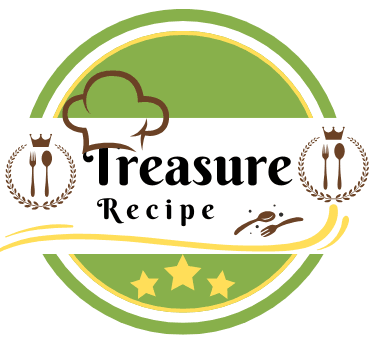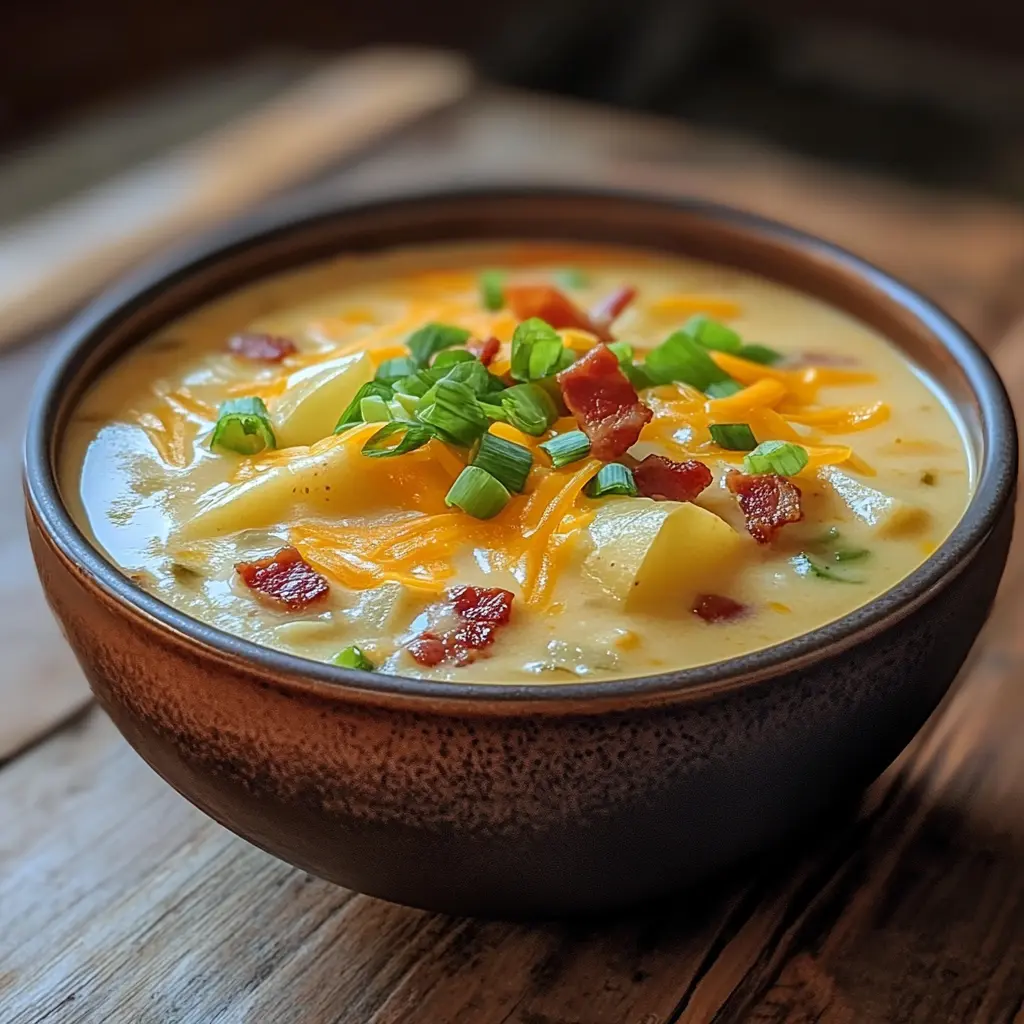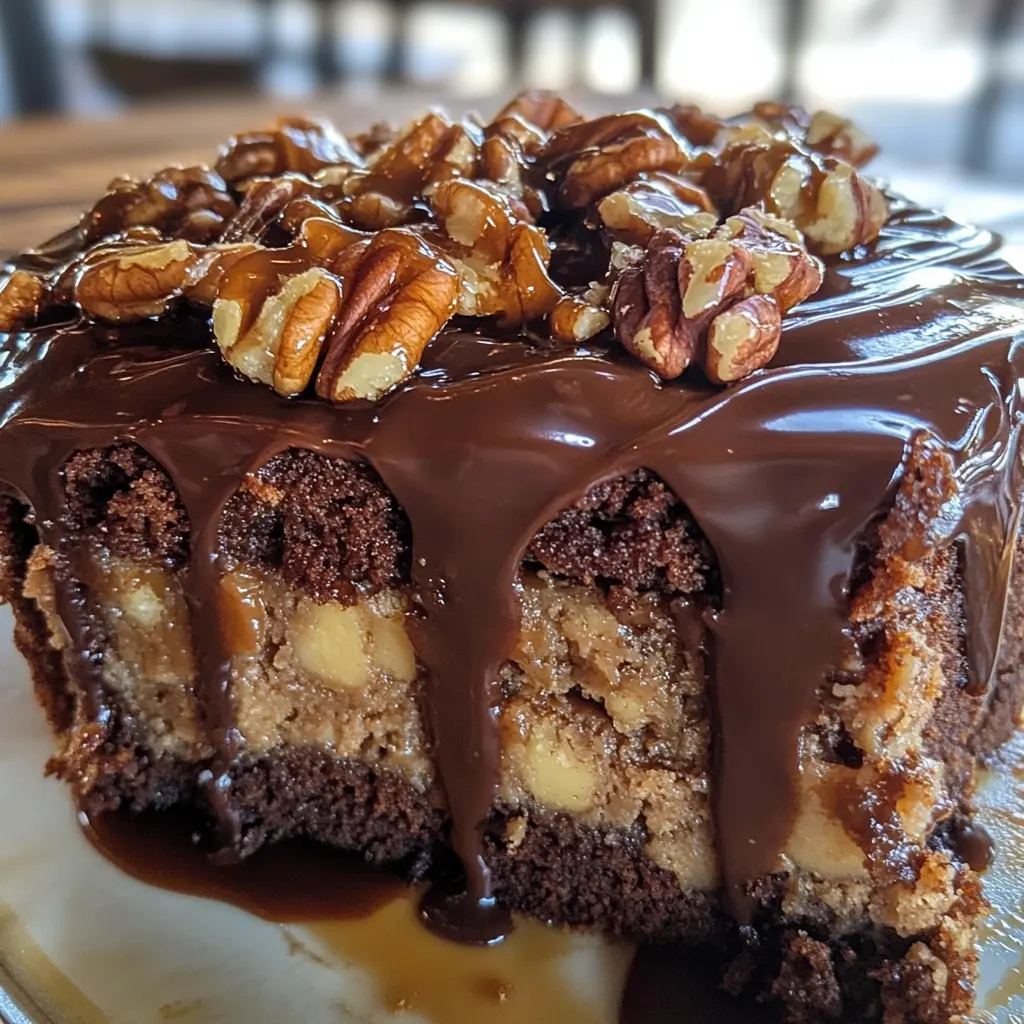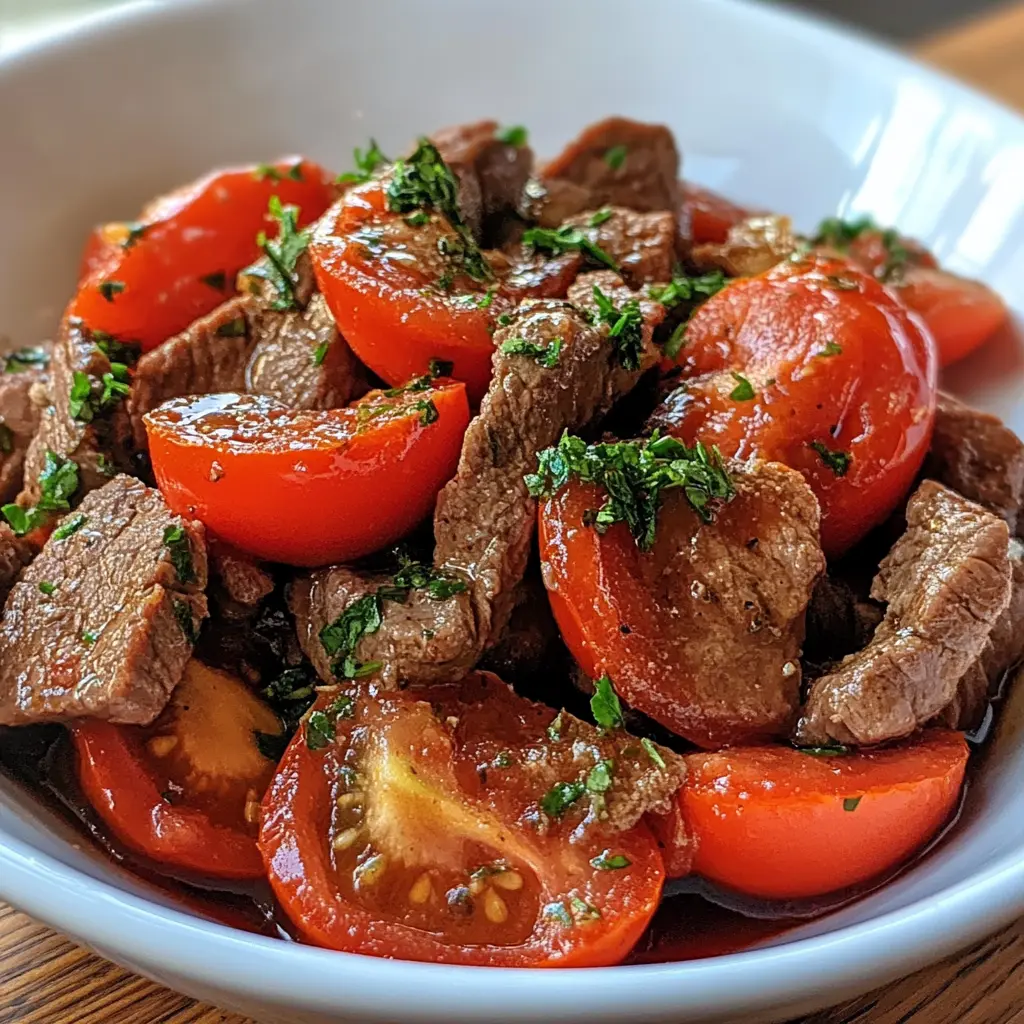Nothing beats a warm bowl of Outback potato soup on a cold day. This hearty, creamy, and fully loaded comfort food has become a favorite in homes across the country. Modeled after the beloved version from Outback Steakhouse, this soup is rich in flavor, thick in texture, and topped with classic fixings like bacon, cheese, and green onions. In this guide, we’ll explore everything from its origins and popular variations to how to make it at home step-by-step. We’ll also answer some frequently asked questions like how to thicken potato soup, why yours might lack flavor, and if it’s hard to digest. Whether you’re craving comfort food or trying to recreate a restaurant favorite, this guide is for you.
Table of Contents
What is Outback Potato Soup and Why It’s So Popular
Outback Steakhouse, the well-known Australian-themed American restaurant chain, became famous not only for its steaks but also for its indulgent side dishes—and their baked potato soup stands out among them. Known for its rich texture and comforting flavor, this soup quickly became a customer favorite, prompting countless fans to try recreating it at home. While many creamy soups exist, there’s something uniquely satisfying about the Outback version that keeps people coming back for more.
At its core, this soup is a blend of familiar ingredients: potatoes, cream, cheese, bacon, and spices. But what sets it apart is the balance between smooth and chunky textures, the smoky taste from crispy bacon, and the hint of sharpness from cheddar cheese. This balance creates a layered flavor experience that feels both gourmet and familiar.
Discover great ideas like Crispy Bang Bang Chicken – The Ultimate Crunchy & Flavorful Recipe if you’re planning a warm comfort dinner lineup.
Key Ingredients in Authentic Outback Potato Soup Recipe
Must-Have Ingredients and Substitutions
To replicate the famous Outback potato soup at home, you’ll need to stick to a set of reliable core ingredients. These essentials work together to give the soup its signature creamy texture and comforting depth.
Here’s a list of the key ingredients you’ll need:
| Ingredient | Purpose in Soup | Substitution Options |
|---|---|---|
| Russet Potatoes | Provides bulk, texture, and starch | Yukon Gold for a creamier texture |
| Heavy Cream | Adds richness and body | Half-and-half or whole milk for lighter option |
| Chicken Broth | Builds savory base flavor | Vegetable broth for vegetarian version |
| Cheddar Cheese | Delivers bold, cheesy depth | Monterey Jack or Colby for milder taste |
| Cooked Bacon | Infuses smoky, savory flavor | Turkey bacon or omit for vegetarian |
| Butter | Adds richness and helps sauté aromatics | Olive oil for dairy-free option |
| Flour | Helps thicken the soup | Cornstarch slurry for gluten-free version |
| Green Onions | Brings freshness and a bit of bite | Chives or finely diced leeks |
| Salt and Pepper | Essential for seasoning | Sea salt or garlic salt for variation |
Most versions of Outback potato soup include bacon as a key ingredient, giving it that unmistakable smoky undertone. However, if you’re making a meatless or lighter version, there are plant-based or lean alternatives that still bring plenty of flavor.
Discover more great swaps and additions in this warm dish: Chocolate Chip Bagel – The Best Homemade Recipe You’ll Ever Bake—perfect to pair on the side for brunch-style comfort meals.
Step-by-Step Guide to Making Outback Baked Potato Soup at Home
Prepping Your Ingredients Like a Pro
Before turning on the stove, proper prep is key to making this recipe smooth and stress-free. Start by washing, peeling, and dicing your potatoes into uniform ½-inch cubes. Uniformity ensures even cooking and the perfect blend of soft and slightly firm textures in each bite.
Next, chop your aromatics: green onions, garlic (if using), and any additional herbs you plan to add. Set aside shredded cheese, cooked crumbled bacon, and measured spices. It’s best to cook and crumble your bacon ahead of time. This allows you to control how crispy you want it, and you’ll even have bacon grease leftover to use in your roux for an extra boost of flavor.

Here’s a simple prep checklist to help you stay organized:
| Prep Task | Tip |
|---|---|
| Peel & dice potatoes | Use a mandoline or sharp knife for quick, even cuts |
| Shred the cheese | Freshly shredded melts better than prepackaged |
| Cook bacon | Bake or pan-fry until crispy, then crumble |
| Chop onions & garlic | Keep them small and uniform for even flavor |
| Measure ingredients | Have flour, broth, and cream ready to go |
Don’t miss our recipe for Baked Crunchy Hot Honey Chicken – The Best Crispy Oven Recipe (2025) if you’re planning a cozy weekend feast.
Cooking Instructions for That Signature Flavor
Once your ingredients are ready, follow these step-by-step cooking directions to recreate the creamy, dreamy Outback baked potato soup at home.
- Cook Aromatics & Bacon Fat Base
In a large pot over medium heat, melt 2 tablespoons of butter (or use reserved bacon fat). Add chopped green onions and sauté until soft, about 2 minutes. Add 2 tablespoons of flour and stir to form a roux. Cook for 1 minute to remove raw flour taste. - Add Broth and Potatoes
Slowly whisk in 4 cups of chicken broth. Stir well to avoid lumps, then add diced potatoes. Bring mixture to a boil, then reduce heat to a gentle simmer. Cook uncovered for 15–20 minutes or until potatoes are fork-tender. - Mash & Stir
Use a potato masher to mash some (not all) of the potatoes in the pot. This helps naturally thicken the soup while leaving chunks for texture. - Add Cream & Cheese
Stir in 1 cup of heavy cream and 1½ cups of shredded cheddar cheese. Stir continuously until the cheese is fully melted and the soup is rich and smooth. - Season & Simmer
Add salt and freshly ground black pepper to taste. Simmer for an additional 5–10 minutes on low heat to allow the flavors to meld. - Finish with Toppings
Ladle soup into bowls and top with crispy bacon, extra shredded cheese, and green onions. Optional: add a dollop of sour cream or a sprinkle of smoked paprika.
The end result? A velvety soup with the perfect balance of creamy, cheesy, and smoky flavors that tastes just like it came from Outback’s kitchen.
How to Thicken Potato Soup Naturally (Without Ruining It)
The Science Behind Soup Thickness
Thickening potato soup doesn’t have to involve complicated techniques or a ton of extra ingredients. In fact, the beauty of Outback-style potato soup is that it thickens beautifully on its own when you understand the role of starch and fats.
Potatoes—especially starchy varieties like russets—naturally release starch into the liquid as they cook. This starch acts as a thickener, helping to build a creamy base without needing heavy thickeners like cornstarch or flour-based roux. When some of the cooked potatoes are mashed or blended into the broth, the starch intensifies the thickness, giving the soup a luscious, velvety feel.
Heavy cream, butter, and shredded cheese also contribute to the thickness. Their fat content emulsifies into the broth, making the soup richer and silkier.
So, thickening comes down to two things: starch from the potatoes and fat from the dairy. Once you understand this combo, you’ll never need shortcuts like instant mashed potatoes or thickeners that dull the flavor.
Looking for a dish that pairs well with thick soups? Check out our recipe for Chocolate Chip Bagel – The Best Homemade Recipe You’ll Ever Bake—the sweet-savory combo hits every craving.
Flavor Boosters – How to Avoid Bland Potato Soup
Common Mistakes That Kill Flavor
There’s nothing worse than a beautiful bowl of potato soup that tastes flat. Even when your texture is perfect, poor seasoning or ingredient imbalances can leave your soup lifeless. Here are the most common flavor-killing mistakes to avoid when making Outback-style potato soup:
- Underseasoning
Potatoes soak up a lot of salt, so if you don’t season early and often, your soup will fall flat. Always season the soup base while it simmers, not just at the end. - Skipping the Aromatics
Green onions, garlic, or shallots might seem optional, but they build foundational flavor. Sautéing them at the start is key to adding depth. - Using Low-Quality Broth
Your broth carries the soup’s flavor. If it’s bland, your soup will be too. Use high-quality chicken or vegetable broth—or better yet, homemade stock. - Adding All the Dairy Too Soon
Adding cream or cheese too early can mute flavor development. Wait until the end of the cooking process so the soup has time to develop a rich profile before dairy is added. - Overboiling
Boiling your soup too hard can break down the fats and dull the final taste. A gentle simmer is best to let flavors marry properly.
Discover other tricks to elevate your kitchen game with this popular post: Crispy Bang Bang Chicken – The Ultimate Crunchy & Flavorful Recipe
Simple Add-ins That Make a Big Impact
Now that you know what not to do, let’s talk about what you can do to bring that signature Outback flavor to life—and even improve on it. These little tweaks can make your soup go from good to “can I have seconds?”
- Sautéed Garlic and Onion Base
Cooked in butter or leftover bacon grease, this aromatic base deepens flavor from the first spoonful. - Smoked Paprika or Chili Powder
Adds warmth and subtle smokiness. Use sparingly—about ½ teaspoon per pot—for a gentle kick. - Worcestershire Sauce
Just a dash (½ teaspoon) brings umami depth, enhancing the savory notes without overpowering. - Sharp Cheddar Cheese
Instead of mild cheddar, go sharp. The stronger flavor stands up better against the richness of cream and potato. - Herbs like Thyme or Rosemary
A pinch of dried thyme or a sprig of rosemary simmered in the soup can bring a fresh, woodsy background flavor. Just remember to remove whole herbs before serving. - Sour Cream Finish
A spoonful of sour cream stirred into the bowl before serving brightens up the richness and balances heavy flavors. - Freshly Cracked Pepper
Don’t underestimate a few turns of the pepper mill—black pepper adds a sharp note that cuts through the creaminess beautifully.

If you’re craving a cozy dinner experience, this would pair beautifully with a crusty slice of garlic bread or something sweet on the side like Chocolate Cherry Cookies – The Best Chewy Recipe You’ll Ever Try.
Nutritional Breakdown – Is Potato Soup Healthy or Heavy?
Caloric and Nutritional Values
Outback-style potato soup, with its rich mix of cream, cheese, and bacon, leans toward the indulgent side of the comfort food spectrum. A standard serving (around 1½ cups) of loaded baked potato soup typically contains:
| Nutrient | Approximate Value per Serving |
|---|---|
| Calories | 400–550 kcal |
| Total Fat | 25–35 g |
| Saturated Fat | 12–18 g |
| Carbohydrates | 35–45 g |
| Protein | 10–15 g |
| Sodium | 800–1000 mg |
| Fiber | 2–4 g |
These numbers can vary based on ingredient swaps and portion sizes. Most of the calories come from the cream, cheese, and bacon, while the carbohydrates are mainly from potatoes and any added flour.
The soup does provide decent protein thanks to the cheese and bacon, and it has filling fiber from the potatoes. But the high sodium and fat content make it more of an occasional comfort meal than a daily go-to—especially if you’re watching your diet.
Want another cozy option to balance your week? Don’t miss our comfort classic Easy Shepherd’s Pie Recipe – The Best Homemade Comfort Food, perfect for meal-prep days.
Serving Ideas – What to Pair with Outback Potato Soup

Best Bread, Salad, and Drink Pairings
Outback potato soup is hearty enough to be a meal on its own, but the right sides can turn a bowl of soup into a full dining experience. Whether you’re serving it for dinner, lunch, or even brunch, the right pairing adds texture, contrast, and a bit of freshness to the table.
Perfect Breads for Dipping or Serving On the Side:
- Garlic breadsticks: The buttery crunch complements the creamy texture of the soup.
- Cheddar biscuits: A Southern classic that mirrors the soup’s cheesy richness.
- Crusty French baguette: Adds structure and soaks up every last drop of flavor.
- Soft pretzel rolls: Their saltiness pairs beautifully with the smoky bacon and cheese.
Fresh Salad Options That Balance the Richness:
- Classic Caesar salad: The crisp romaine and creamy dressing add freshness.
- Baby spinach salad with vinaigrette: Light, tangy, and great for cutting through the richness.
- Kale and cranberry slaw: A bit of sweetness and crunch balances the hearty soup.
- Arugula salad with citrus dressing: Peppery greens contrast nicely with the creamy base.
Beverage Pairings That Work Well:
| Drink Type | Why It Works |
|---|---|
| Iced Tea (unsweetened or lemon) | Cleanses the palate between bites |
| Crisp white wine (like Sauvignon Blanc) | Refreshes and contrasts richness |
| Sparkling water with lime | Adds fizz and a fresh note |
| Apple cider (hot or cold) | Pairs well with the fall comfort food vibe |
Want to explore a drink-friendly side option? Discover our Honey Glazed Salmon Bites – The Best Sticky Bites of 2025 for an elevated pairing that balances sweet and savory.
For guests who love a rich finish, try a warm pairing like Overnight Crème Brûlée French Toast Recipe – The Best Make-Ahead Breakfast as a unique brunch follow-up.
Storage, Reheating, and Make-Ahead Tips
How Long Does It Keep?
Outback-style potato soup stores surprisingly well, making it a great option for meal prep or leftovers. The key is proper storage to preserve the texture and taste.
Here’s what you need to know:
- Refrigerator: The soup stays fresh for 3 to 4 days in an airtight container. Make sure it cools completely before sealing to prevent excess moisture and condensation.
- Freezer: While technically freezable, dairy-based soups with cream or cheese can separate or become grainy when thawed. For better results, freeze the soup before adding the cream and cheese, then stir them in when reheating.
If freezing, portion the soup into individual airtight containers and label them with the date. It will keep in the freezer for up to 2 months. Just leave room at the top for expansion.
Tip: Avoid storing garnishes like bacon or green onions in the soup—they get soggy. Store them separately and add them fresh when serving.
Best Ways to Reheat Without Losing Creaminess
The biggest challenge when reheating creamy soups is keeping the texture smooth. Follow these easy steps to maintain that restaurant-style richness.
Stovetop Method (Best Option):
- Transfer soup to a saucepan and warm over low to medium-low heat.
- Stir frequently to prevent sticking or separation.
- If too thick, add a splash of milk or broth to loosen the texture.
- Reheat just until hot—avoid boiling, which can cause the dairy to curdle.
Microwave Method:
- Place soup in a microwave-safe bowl and cover loosely.
- Heat in 30-second intervals, stirring in between.
- If it thickens too much, stir in a bit of cream or broth.
- Top with fresh bacon and cheese after reheating.
Make-Ahead Pro Tip:
If you’re prepping this soup for a party or weeknight dinner, cook it up to the point before adding cream or cheese. Then cool, store, and finish the soup with the final ingredients just before serving. This way, you get that fresh, creamy texture every time.
Looking for a make-ahead dessert to go with it? Don’t miss our cozy 3 Ingredients Strawberry Mousse Recipe – Quick & Creamy Dessert to wrap up your meal with something light and refreshing.
Frequently Asked Questions about Outback Potato Soup
How does potato soup thicken?
Potato soup thickens naturally as the starch from the potatoes breaks down during cooking. You can also mash some of the cooked potatoes or blend a portion of the soup to release more starch. Adding dairy like heavy cream and cheese also contributes to a rich, velvety consistency. If you need more thickness, a flour or cornstarch slurry can help, but natural thickening from the potatoes is usually enough.
Does Outback baked potato soup have bacon?
Yes, the original Outback baked potato soup is topped with crispy bacon and often includes small bacon bits mixed into the soup. The smoky flavor of the bacon enhances the creamy, cheesy richness and gives the soup that signature loaded baked potato taste. It’s one of the most popular elements of the dish.
What kind of soup does Outback have?
Outback Steakhouse is most well-known for its baked potato soup, which is offered seasonally. They occasionally serve other options like French onion soup or clam chowder, but their baked potato soup is a fan favorite and the most frequently requested by customers and copycat recipe seekers alike.
Conclusion: Final Thoughts on Making the Perfect Outback Potato Soup
There’s a reason Outback potato soup has become a comfort food staple. It combines creamy, cheesy richness with bold toppings like crispy bacon and green onions—creating a bowl of warmth that’s hard to beat. Whether you’re making the original, trying a vegetarian spin, or prepping for the week, this soup is adaptable, crowd-pleasing, and surprisingly easy to master.
With the right potatoes, careful seasoning, and simple kitchen techniques, you can bring that restaurant-quality flavor right to your own table. From flavor boosters and storage tips to healthy swaps and full-bodied garnishes, now you have all the tools to make the best bowl every time.
`Check out more cozy recipes like Ground Turkey Casserole Recipe – Easy & Delicious One-Pan Meal if you’re looking to expand your comfort food collection.






